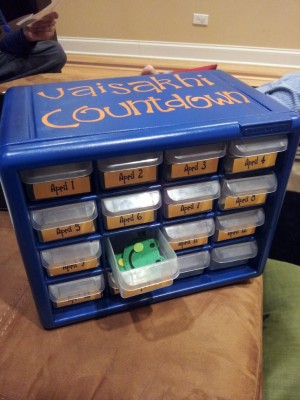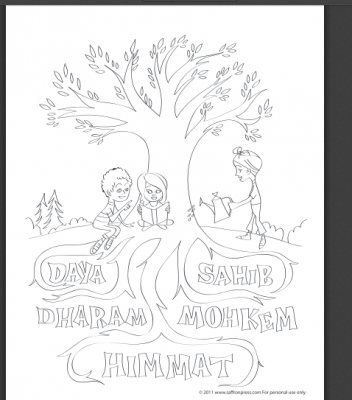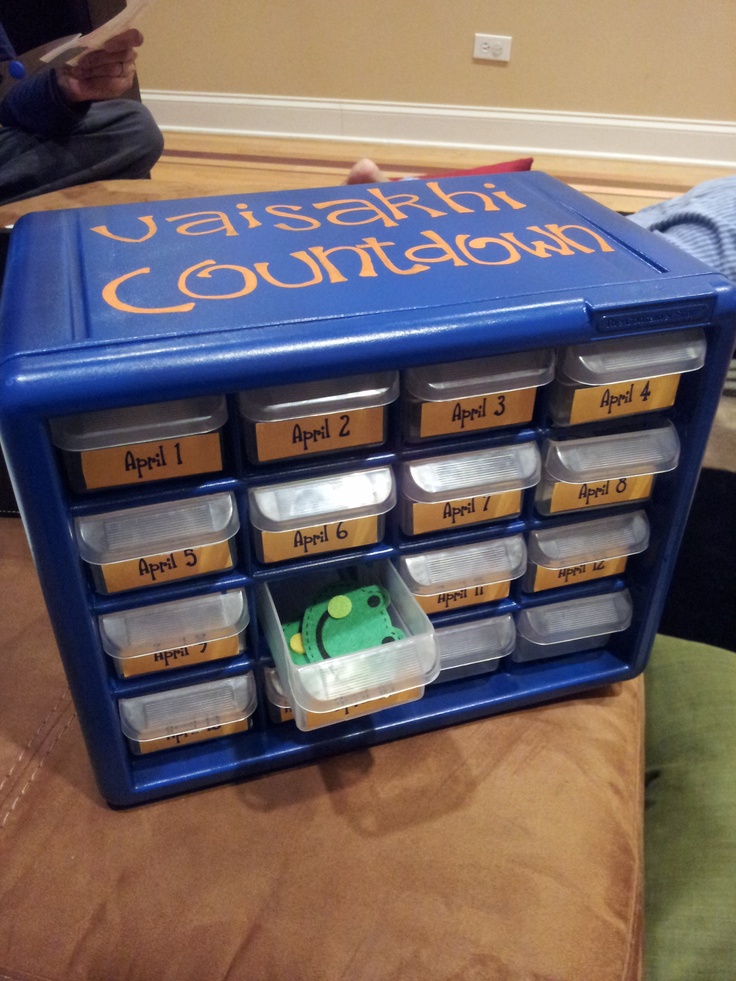By Anjum Choudhry Nayyar
Vaisakhi, also known as Baisakhi, is an ancient harvest festival held in the Punjab region which is used to mark the beginning of a new solar year, and new harvest season. These celebrations are held on the 13th April, and occasionally on 14th April of each year. This day is marked by Sikh devotees who attend the Gurudwara before dawn with flowers and offerings in hands. It was started about 300 years ago and is now held by some Indian nationals’ worldwide.

Photo Credit: Navjot’s Pinterest board
Many of us first learn about our traditions from our own parents and it’s what we feel, see and take from them that compel us to want to impart some of what we learn onto our own children.
As some moms in the Sikh community get ready to celebrate Vaisakhi on April 14, one mom has taken what she’s learned growing up in a South Asian household with strong ties to Sikhism and turned it into a passion to help others.
Award-winning author and elementary teacher, Navjot Kaur, a Sikh-Punjabi, said she found it challenging to find suitable resources to educate and engage school-aged children on Vaisakhi.
On her blog she writes, “While I maneuvered through cyber space, I came across quite a few links dedicated to Vaisakhi (or Baisakhi) but I was discouraged that educators were still using the 300 year-old version of the Vaisakhi story to inform all ages about the key Sikh calendar event. The original story holds great value but the historical form does not necessarily resonate with young children. As an idea for a school-wide assembly, one forum comment read – “Oh, just have a few swords dripping with blood and plant five kids in the audience to come up on stage. Should be fun.” Huh? What? Did I just read that on an education forum? How does that demonstrate the true meaning behind Vaisakhi?”
When she became a mother to a hard of hearing child, Navjot discovered the beauty of signed language. When it comes to teaching her child about cultural holidays, like Vaisakhi, she uses the same principle. She created a resource to help other moms and teachers expose kids to the holiday, called ‘The Countdown to Vaisakhi.’
Festivals are a great opportunity to bring culture into the classroom
“Vaisakhi holds a deep significance in our home because I feel the values of Vaisakhi are universal values that we can all share,” says Navjot. “I believe my teaching background has been the greatest asset in this regard. I take a lot of time to prepare for and engage my son’s interest in this celebration. I often receive messages from mothers from different parts of the country asking me for help. This is one of the reasons why I created the Countdown to Vaisakhi resource.”
The resource is unique in what it provides parents.
“I wanted to create a resource that was accessible and differentiated for children. I plan to keep adding to this collection. There are also ideas pinned to my Vaisakhi board on Pinterest, so please do check it out!”
On the site, there are tools for non-Sikh moms on elements of Vaisakhi as well. The goal Navjot says was to make it accessible.

Navjot Kaur
Other Punjabi Teaching Resources.
“It really depends on the age of the child. Some parents wish to present Vaisakhi to their child’s classroom, so they have read A Lion’s Mane to the students and then, they have completed a follow up activity like making a lion mask,” says Navjot. “Other (more musical) parents have included playing the tabla with their presentations. We created a claymation to educate non-Sikhs on the patka or dastaar too. Many parents share this with the classroom to encourage further dialogue.
[vsw id=”Yu_Wfq0u7H0″ source=”youtube” width=”425″ height=”344″ autoplay=”no”]
She says if we can celebrate Christmas and Easter with fun activities, we can do the same with Vaisakhi.
So why does she think Vaisakhi is so important in her home?
“Vaisakhi is probably the most significant celebration of the year for our family. The values of Vaisakhi resonate with me on a personal level. I’ve always felt strongly about social causes and am now a strong advocate for my son’s special needs. I believe that strength and resilience come from those core values.”
She adds even though she may not have felt as strongly about its significance while growing up, (she never learned about it at school or celebrated it in a way that made it easy to talk about with her friends.) her father did an amazing job to engage her and her siblings while they were younger without being overly forceful.
“He would share saakhis throughout the year and especially during Vaisakhi. While retelling these stories, he would connect them to our lives or what was happening in the world around us, so we felt very connected. By doing so, he taught us to reflect and think about Sikhi in our everyday interactions.”
Navjot says she thinks there are different perceptions of what Vaisakhi means in the community based on each person’s experiences.
“I feel the Nagar Kirtan (Khalsa Day Parade) sometimes overshadows the true significance of this date. People tend to attend for the abundance of free food rather than reflecting, for example, on why there is such a great need for Food Banks today,” said Navjot. “The Guru’s Langar was created to provide an equal amount and type of food for everyone. I hope that we can still keep those values in perspective as we celebrate Vaisakhi.
She says schools can play a role in celebrating Vaisakhi just as they celebrate other holidays such as Christmas or Easter.
DOWNLOAD THIS COLOURING PAGE HERE.

Vaisakhi Colouring Page
“Teachers tend to include holidays that they are most comfortable with. Today, teachers have to ensure they are providing a culturally responsive education to all their students. If that means reaching out to the community to find partnerships and resources, then that is what should happen.”
She says her book, ‘A Lion’s Mane’ has been a popular choice for some classrooms during Vaisakhi.
For Navjot, keeping culture alive in her home comes easy. As a book lover, one of the most seamless ways she’s been able to do this is by ensuring her son is exposed to a diverse range of books and toys.“
I created a Teacher’s Guide for the book to ensure this diverse book for children could be included in a regular Language Arts program. One school’s parent committee used my Countdown to Vaisakhi handout to create a Phulkari for their Vaisakhi event.”
PRINTABLE VAISAKHI CARD DOWNLOAD.

“We recently put up some shelves in my son’s room so that I could create a space that showcased all the beautiful books in his collection. When I finished placing the books on the shelves, my first reaction was – I need more diverse faces on the covers of these books!”
Stay tuned for our review of a Lion’s Mane, coming up on masalamommas.com! In the meantime, be sure to get your Vaisakhi resources at Navjot’s links below.
Vaisakhi dee Vadayee (Happy Vaisakhi)!
Links to book trailer and claymation video for A Lion’s Mane:
Claymation created for How to Tie a Patka.
To learn more about Navjot, please visit www.navjotkaur.com
To purchase books, please visit www.saffronpress.com
Follow Navjot on Pinterest or Facebook
More about Navjot:
Born and raised in England and of Sikh-Panjabi heritage, Navjot Kaur is inspired by diverse environments and culture. Her first children’s book, A Lion’s Mane, won the 2010 Skipping Stones Honor Award for Multicultural and International Awareness. An Educator, Children’s author and Mother, she believes that our children can become advocates for social change and uses her writing as a way to inspire them to become active global citizens.
©masalamommas and masalamommas.com, 2016-2017. Unauthorized use and/or duplication of this material without express and written permission from this site’s author and/or owner is strictly prohibited. Links may be used, provided that full and clear credit is given to masalamommas.com and Masalamommas online magazine with appropriate and specific direction to the original content.



Thank you for featuring my work in this Vaisakhi article!